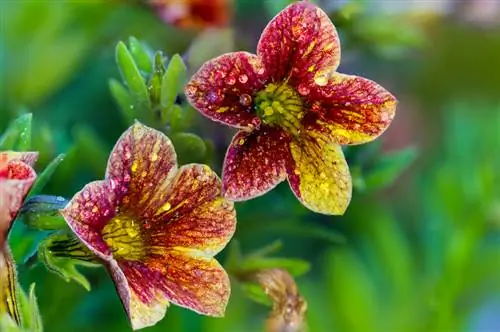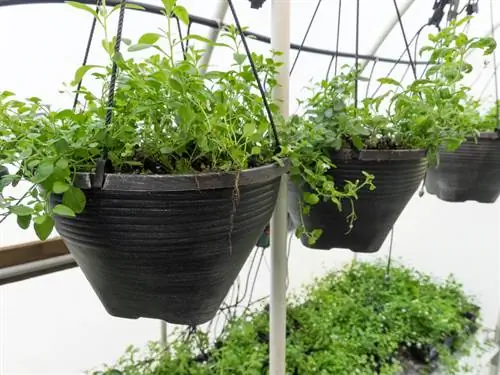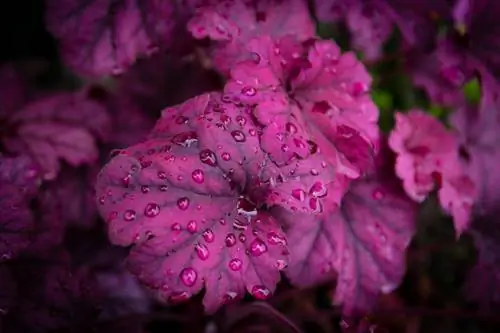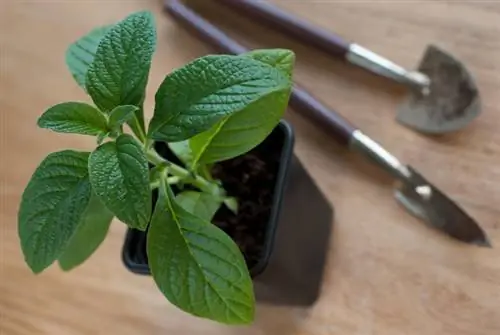- Author admin [email protected].
- Public 2023-12-16 16:46.
- Last modified 2025-01-23 11:20.
The magic bell (Calibrachoa) is a close relative of the petunia and is often referred to as a mini petunia due to its very similar appearance. While the magic bell has similar site conditions as the petunia, it is less sensitive to periods of rain and has no sticky shoot tips.
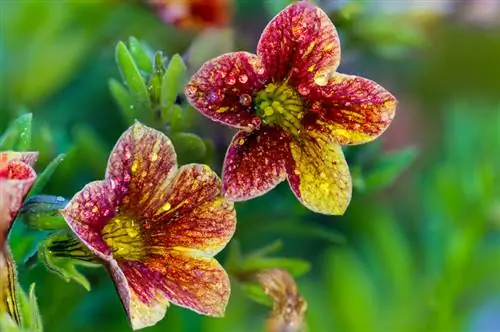
How do I optimally care for a magic bell?
The optimal care of the magic bell includes regular watering, ideally daily in good weather, slightly acidic plant substrate and low-lime water, the use of slow-release fertilizer and iron fertilizer and, if necessary, pruning in preparation for overwintering.
How often does the magic bell have to be watered?
The magic bell loves warm and sunny locations, which is why it thrives particularly well on balconies. However, this also entails a special need for water, which increases in drought and persistent heat. The plant substrate, which is ideally slightly acidic, should be protected against waterlogging with a drainage layer, but should never dry out completely. In the summer, the magic bell needs daily, moderate watering when the weather is good. Ideally, these should not be administered during the midday heat, but rather in the morning or evening near the roots.
What should you keep in mind when repotting the magic bell?
The roots of the magic bell are relatively sensitive, which is why repotting should always be done very carefully. Light-colored planters are preferable to dark-colored specimens, as the latter can heat up significantly when exposed to sunlight. In addition, when repotting, a slow-release fertilizer can be mixed directly with the slightly acidic petunia or rhododendron soil.
When and how is the magic bell cut?
In contrast to the petunia, the wilted flowers of the magic bell are less disturbing and therefore do not necessarily have to be plucked off regularly. Since the magic bell is not a winter-hardy plant, there is usually no need for pruning to achieve a more compact growth habit. However, you can cut the magic bell back to a shoot length of around 10 centimeters if you want to try to overwinter the plant.
What diseases and pests affect the magic bell?
The magic bell is occasionally attacked by pests such as whiteflies or aphid colonies. Lightly discolored leaves usually do not indicate a disease, but rather a deficiency caused by incorrect care. They often occur when the pH value is incorrect or after watering with water rich in lime. A special iron fertilizer (€6.00 on Amazon) for the Calibrachoa can help here.
How is the magic bell optimally fertilized?
Basically, you should ensure that the magic bells have a low-lime water supply and that the plants have sufficient iron supplies. You can also significantly increase the growth and abundance of flowers during the summer season with weekly fertilizer applications.
Can the magic bell be overwintered?
The magic bell is actually an annual plant, but it can be easily propagated from seeds. However, experiments by ambitious gardeners have shown that overwintering can be successful under the following conditions:
- Pruning the shoots to a maximum length of 10 centimeters
- Temperatures of a maximum of 14 degrees Celsius (in the house or winter garden)
- Setting up in a bright place
- economical water supply and cessation of all fertilization
Tip
Since all Calibrachoa species are very sensitive to frost, overwintered specimens, seedlings and young plants should only be planted outdoors after the ice saints.

